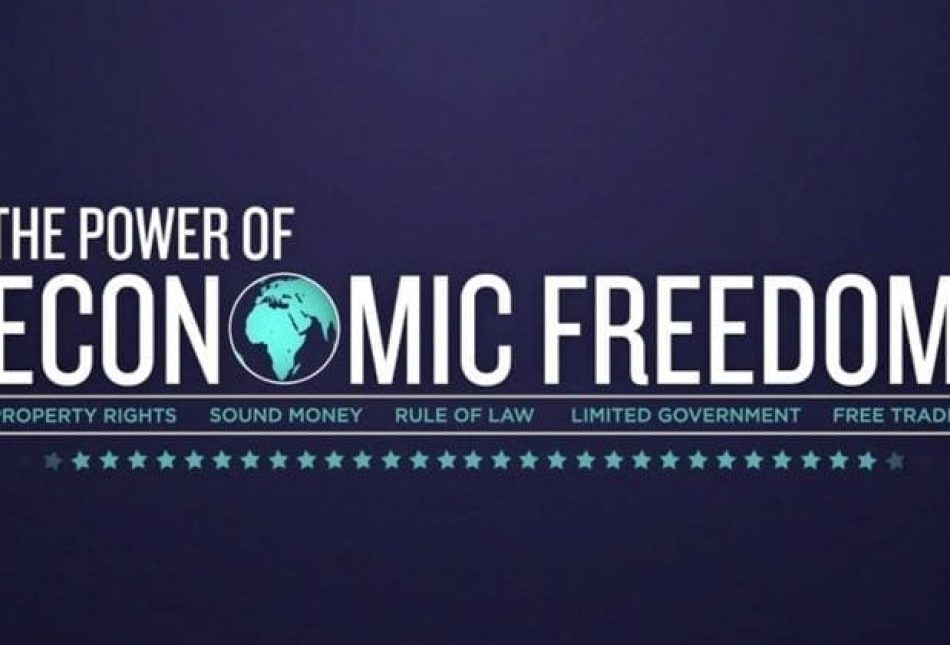Economy
post
Lack of Economic Freedom Means Anemic Growth for New Mexico!

As a consequence of its differentially high tax rates and excessive regulation and government spending, New Mexico has under performed all other states in growth of one important indicator of economic health: per capita income. Over the past 15 years we have fallen behind the U.S. average by 25.4 percent. That means we have grown at an annual average rate of 1.5 percent less than the nation as a whole. In 1986 the U.S. average for per capita income was 14.0 percent higher than NM. In 2001 it is 39.4 percent higher than NM. Had New Mexico grown at the same rate as the national average our average income would be $6000 per person higher today ($29,600 vice $23,600)!
Our comparatively slow rate of growth means we are being caught by states usually considered poor. Mississippi, which has long been last in annual per capita income rankings, was 17.6 percent behind us in 1986. Today Mississippi is only 0.9 percent behind us. Our average annual income would be $3,700 per person higher today had we grown as fast as Mississippi over the past 15 years. Alabama, a state that had roughly the same per capita income as NM in 1986, has outpaced us by $1,900 per person.
As shown in the table, we don’t fare any better over the past 15 years when compared to states in our region:
Where NM’s per capita income would be today had we kept pace with each of these states in our region:
If we had kept up with AZ
Our income would be $ 1,698 higher
If we had kept up with CO
Our income would be $ 5,448 higher
If we had kept up with OK
Our income would be $ 637 higher
If we had kept up with TX
Our income would be $ 3,561 higher
If we had kept up with UT
Our income would be $ 3,514 higher
One wonders at what point our anemic growth becomes a crisis. Only Mississippi and West Virginia are behind us now, and they are closing the gap. How much longer will we put up with the promises of big government when those promises don’t deliver? It is innovation and risk-taking that lead to prosperity, not more government. How much longer will it be before we legislate the kind of economic freedom that encourages innovation and risk-taking?
The reader may wonder about my assertion that economic freedom, in the form of lower taxes and less regulation and government spending, leads to prosperity. When you examine incentives in private and government spheres, you can see that the high correlation between economic freedom (limited government) and economic well-being is no accident. Those who administer the government apparatus, in their roles as politicians and bureaucrats, have less incentive to be responsive to consumers of public services than do their counterparts in the private sector. Private sector consumers have much greater choice. Their choices are voluntary and alternatives exist. If a consumer does not like a particular product, then she can decline to purchase it and purchase another instead. For example, you have many alternatives for today’s lunch; but you have no choice in the budgets, education objectives and research objectives of your state universities.
Each consumer cannot influence public sector choices without great individual effort on his or her part. For example, the budget, education objectives and research objectives of your state universities cannot be altered by you, no matter how much effort you exert to change them. Unless you decide to “vote with your feet,” you are coerced into accepting government policies.
Choices in the private sector, on the other hand, are quite different. Individuals therein personally bear the costs and enjoy the benefits of their own decisions. Consequently individuals have greater incentive to acquire information about prospective choices in the private sector. You will get more personal benefit from the effort of deciding where to have lunch than from trying to influence some unmovable government monolith. Responsiveness to consumer wishes is much more forthcoming in the private sector than in government sector.
More economic freedom means innovators and risk-takers will be able more easily to satisfy consumers’ wishes. Then our prosperity would grow at a rate more like those states that now have greater economic freedom.
